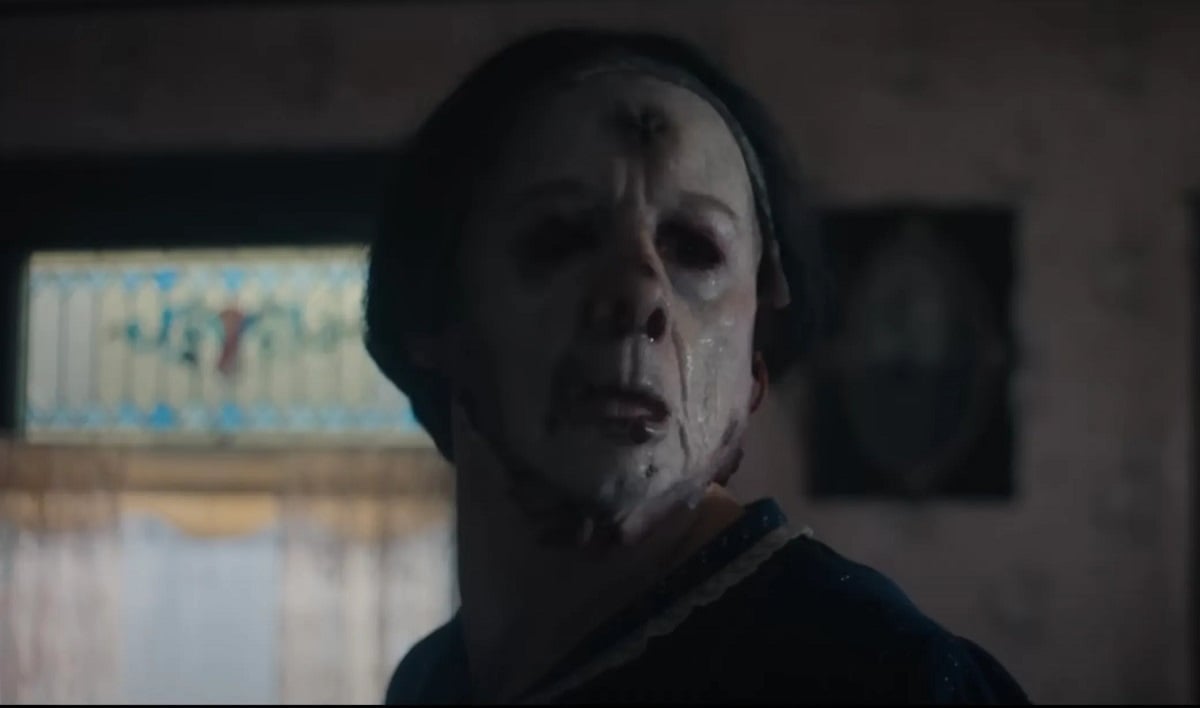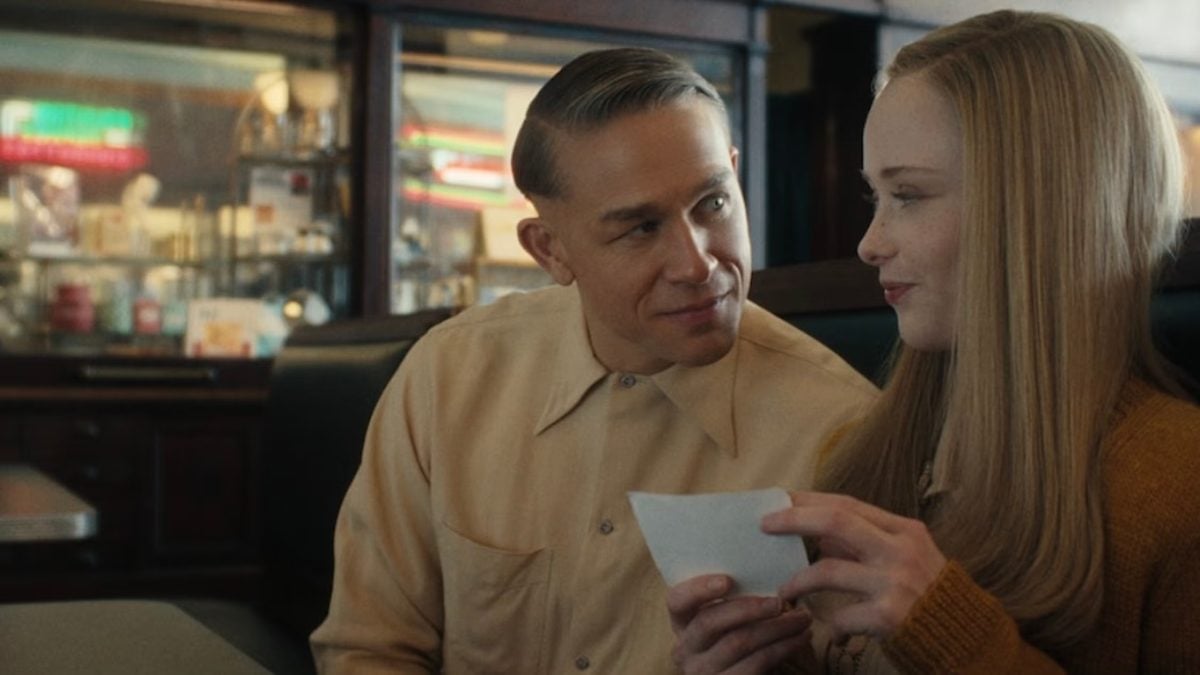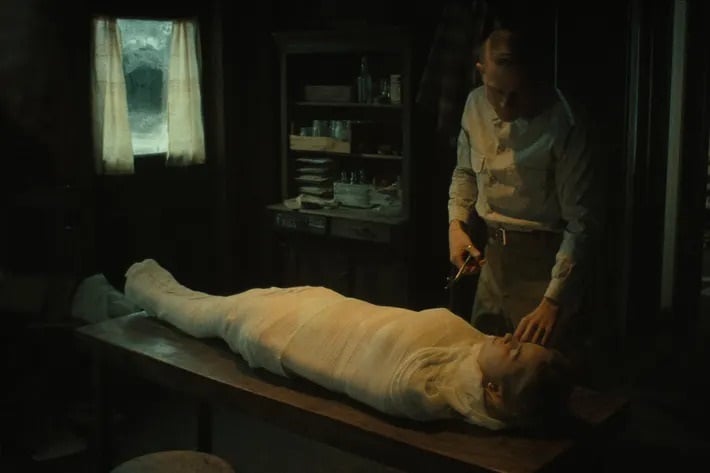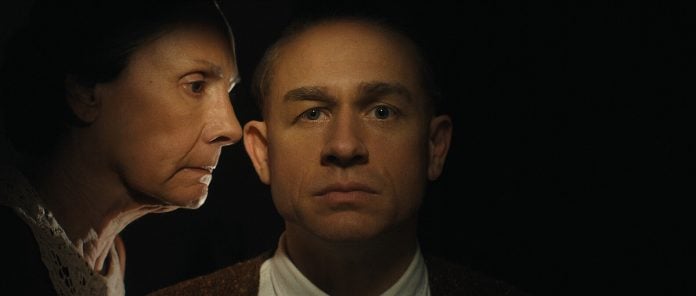Netflix’s Monster: The Ed Gein Story stitches fact, fiction into messy whole
While nailing a strip of human flesh, flayed from a stolen corpse, to a chair as its “seat”, Ed Gein (Charlie Hunnam) turns directly towards the camera and the audience, before saying: “You’re the one that can’t look away”.
Three seasons into Ryan Murphy and Ian Brennan’s Monster anthology series for Netflix, Monster: The Ed Gein Story finally attempts to address the morbid fascination humans have had with serial killers and exploitation media, but it holds together about as well as the sanity of the serial killers at the centre of the series.
Much like the first season, Monster: The Jeffrey Dahmer Story, this season structurally follows the same narrative beats by showing most of everything that Ed does from before and after his psychotic break following the death of Augusta (Laurie Metcalf), his ultra-religious mother.
From the abuse at the hands of his drunkard father, his mother shaming his odd sexual impulses that stemmed from his repressed conservative Christian upbringing, to him creating furniture and household appliances from the body parts of corpses, The Ed Gein Story has it all.
Fact, fiction, fabrication

Where Brennan’s The Ed Gein Story differs from Murphy’s The Jeffrey Dahmer Story is how the third season plays it fast and loose between its presentation of facts and fiction. The most glaring fictional addition is Adeline Watkins (Suzanna Son), a friend and then girlfriend to Ed.
Though there was a real Adeline Watkins, her story involving the real Gein was far less inconsequential to his life, actions and crime. In The Ed Gein Story, however, Son’s Watkins is in practically every episode as a constant presence in Gein’s life. Due to how much Watkins is in this season, The Ed Gein Story has to make things up. Simply put, most of the Watkins scenes are fictional.
Usually, a little obfuscation of fact and fiction is not a big deal for biographies. The problem with Watkins is she is a byproduct of an overstuffed turkey. After Watkins, The Ed Gein Story becomes even more muddled by how much it dedicates time towards exploring the life of Anthony Perkins and Alfred Hitchcock.
Cinema’s morbid inheritance

Played by Joey Pollari, the Perkins segments explore how the real life actor’s portrayal of Norman Bates, a character inspired by the real Gein, in Hitchcock’s Psycho affected his personal and professional life, while those involving Hitchcock (played by Tom Hollander) goes into how he changed the landscape of cinema in 1960 with Psycho.
Juggling between these two subplots and the graphic scenes of Gein’s schizophrenia playing out was apparently not enough, so Brennan even includes a segment involving Tobe Hooper (played by Will Brill) being inspired by Gein to create the infamous The Texas Chain Saw Massacre, cinema’s first slasher film.
These segments involving Perkins, Hitchcock and Hooper function as a meta commentary on Gein and how his abhorrent crimes changed the face of cinema by introducing an appetite in the audience for something more extreme than the conservative films they were consuming prior to Psycho.

In that regard, these are decent topics to explore but they do not belong in The Ed Gein Story, where most of the season is typical exploitative cinema, as the scenes before and after these topics are brought up involve graphic scenes.
Both clash with each other. Separately, they could function as two individual series, where one is the typical Murphy-Brennan exploitation production, while the other is a serious, introspective look at the history of slasher films and television series and their connective tissue with America’s serial killers.
However, stuffed together into the same series, whiplashing between two different tones and personalities, it just seems like Brennan’s The Ed Gein Story suffers from the same schizophrenia as the person it is based on.







